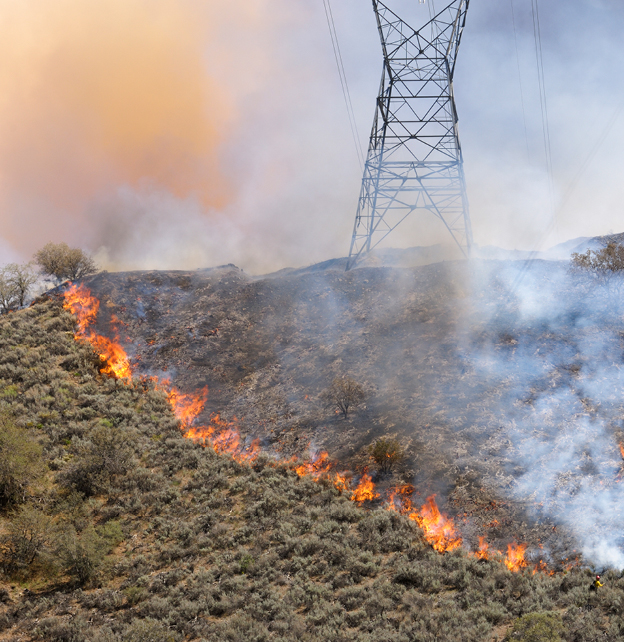Solutions
Double click here to edit new New Header component
-
Solutions
-
SOLUTIONS
Barclays Investment Bank offers advisory, finance and risk management services that connect your ideas to capital and power possibilities.
-
-
Insights
-
INSIGHTS
View thought-leading perspectives from Barclays Investment Bank’s financial experts and Research analysts.
-
-
News and Events
-
News and Events
NEWS AND EVENTS
Get the latest news about Barclays Investment Bank businesses, people and our work in the community, as well as our upcoming events and conferences.
-
- Contact Us
-
Client Login
- Barclays Live
- BARX
Client Login
Parsys 1
Double click here to edit Hero Media component
Clients of the Corporate & Investment Bank can read the full report, North America Power & Utilities: The Future of Extreme Weather on Barclays Live. Sign in
Parsys 2
Double click here to edit Go To Section component
Go to section
Parsys 3
Storms and other extreme weather events – including wildfires – have led to large financial implications for the utilities industries and the US as a whole in the past decade. The fallout includes the bankruptcy of the holding company of a large US utility, PCG. The cost to taxpayers runs well into the hundreds of billions of dollars.
The utilities industry can turn risk into opportunity by working with policymakers, updating system planning requirements and increasing investment in new technologies to ensure resilience, reliability and capacity.
Our Equity Research analysts list some steps companies can take as they work toward their net-zero goals while also ensuring sufficient energy capacity.
1. Extreme temperatures: avoiding disruption of supply and demand
Rolling heat waves in Texas and California in the past few years (and again this year) have had devastating consequences, leading to dozens of deaths and leaving people unable to go about their daily lives. With temperatures regularly hovering around 40 degrees Celsius (104 degrees Fahrenheit), power cuts were frequent, causing further misery.
Double click here to edit new Interactive Chart component
Frequency of extreme temperatures are rising
Frequency of extreme temperatures are rising
Source: National Oceanographic and Atmospheric Association, Barclays Research
Extreme cold can also cause problems for electric plant equipment and gas infrastructure.
During the peak evening hours when households most require energy, wind and solar capacity cannot meet the demand.
Potential solutions:
- Advanced gas path (AGP) technology: Replace older mechanical components in gas turbines with modern metals that can withstand higher pressure and ramp up and down faster.
- New cooling technologies: Inlet air cooling systems
- Enhanced weatherisation: Protect equipment and pipes in colder conditions.
- Innovative solar: Stagger solar fields or adjustable solar to capture late day generation
- Enhanced battery storage
2. Drought and wildfire: Limiting ignition points and improving system resiliency
Droughts and wildfires affect a range of utilities, from hydropower generation to transmission systems. Persistent droughts have had cascading effects on energy and water infrastructure. Large-scale catastrophic wildfires, aided by dry surface conditions, have been responsible for some of the highest financial losses ever experienced by the US utilities sector.
Potential solutions:
- Undergrounding cables or converting to covered conductors
- Water conservation and efficiency technology
- Forestry management improvement
- Predictive methods to de-energise lines during peak risk periods for wildfire
Double click here to edit new Interactive Chart component
Periods of drought on the West Coast have increased
Periods of drought on the West Coast have increased
Source: National Oceanographic and Atmospheric Association, Barclays Research
3. Flooding: Protecting critical infrastructure
Flooding is one of the largest challenges for utilities. Excessive water entering storm and sewer pipes causes problems at waste water facilities, which can lead to outages and corrosion or destruction of electric transformers and substations.
Potential solutions:
- Storm and sewer separation
- Raising walls surrounding critical infrastructure and waste water facilities
- Raising substations, transformers or building flood resistant vaults
4. Hurricanes: Build and design systems to operate in high winds and floods
Hurricanes provide multiple challenges for utilities as they disrupt energy generation and damage facilities. Resilient transmission and distribution systems are required to withstand high winds and continue operations. Many electric systems do not have the flexibility to recover rapidly after outages.
Potential solutions:
- Storm and sewer separation
- Raising walls surrounding critical infrastructure and waste water facilities
- Raising substations, transformers or building flood resistant vaults
Double click here to edit new Interactive Chart component
Frequency of storms are increasing, 'major hurricanes' the fastest, up 3.4x
Frequency of storms are increasing, 'major hurricanes' the fastest, up 3.4x
A grid for the future
Finding solutions to ensure safe and reliable service is the reason regulated utilities exist. The best management teams will look to turn risk into opportunity by working with policymakers to increase investment in innovative grid-hardening technologies and enhanced capacity resiliency, thereby bolstering capital investment and growth. Ultimately, the magnitude of investment needed to meet highly variable, weather-induced supply conditions will have a substantial effect on earnings growth over the next decade. That said, investment to future-proof utilities – second only to that required for the renewable energy transition – provides a clear net benefit to customers and achieving net-zero commitments.
*Barclays Research
Explore more on our Extreme Weather insights hub
In a series of articles, our Research team offers fresh insights into the connections between climate and weather, and the adaptation and mitigation strategies that economies around the world will have to adopt in the coming years and decades. In the coming months, our analysts will produce sector-specific analyses, to uncover the threats from extreme weather to various parts of the economy.
Read more here
Parsys 4
Double click here to edit Banner component

Parsys 5
Double click here to edit Experts Panel Card component
About the experts

Eric Beaumont, CFA
Senior Equity Research analyst, North America Power and Utilities industry, Chicago

Jessica Whitt
Director and US Head of ESG Research, New York
iParsys for Double Pixel component









